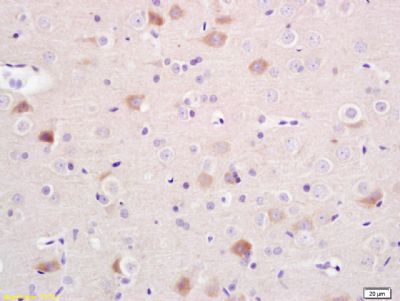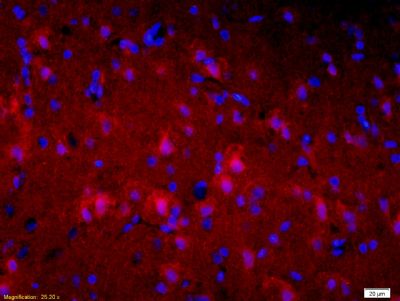| Picture |
Tissue/cell: rat brain tissue; 4% Paraformaldehyde-fixed and paraffin-embedded;
Antigen retrieval: citrate buffer ( 0.01M, pH 6.0 ), Boiling bathing for 15min; Block endogenous peroxidase by 3% Hydrogen peroxide for 30min; Blocking buffer (normal goat serum,SLC0005) at 37℃ for 20 min;
Incubation: Anti-α-Synuclein Polyclonal Antibody, Unconjugated(SL0012M) 1:200, overnight at 4°C, followed by conjugation to the secondary antibody(SP-0024) and DAB(SLC0010) staining
Tissue/cell: rat brain tissue;4% Paraformaldehyde-fixed and paraffin-embedded;
Antigen retrieval: citrate buffer ( 0.01M, pH 6.0 ), Boiling bathing for 15min; Blocking buffer (normal goat serum,SLC0005) at 37℃ for 20 min;
Incubation: Anti-α-Synuclein Polyclonal Antibody, Unconjugated(SL0012M) 1:200, overnight at 4°C; The secondary antibody was Goat Anti-Mouse IgG, Cy3 conjugated(SL0296G-Cy3)used at 1:200 dilution for 40 minutes at 37°C. DAPI(5ug/ml,blue,SLC0033) was used to stain the cell nuclei
|

